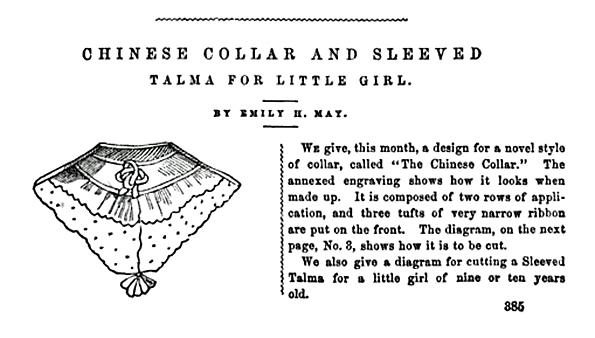Two patterns today. The sleeved Talma looks interesting so I might try making it up for my daughter. If i do I'll update this page. In the meantime enjoy these two patterns from Peterson's Magazine 1857.
We give, this month, a design for a novel style of collar, called "The Chinese Collar." The annexed engraving shows how it looks when made up. It is composed of two rows of application, and three tufts of very narrow ribbon are put on the front. The diagram, on the next page, No 8, shows how it is to be cut. We also give a diagram for cutting a Sleeved Talma for a little girl of nine or ten years old.
No 1 Front containing also the sleeve. No 2 Back. No 3 Collar.
After joining the two parts by the shoulder seam from A to B you must fix the part from C to D of No 2 on the line of +++++++ from C to D marked on No 1, then the part bearing 000 on the neck also accompanied by 000.




